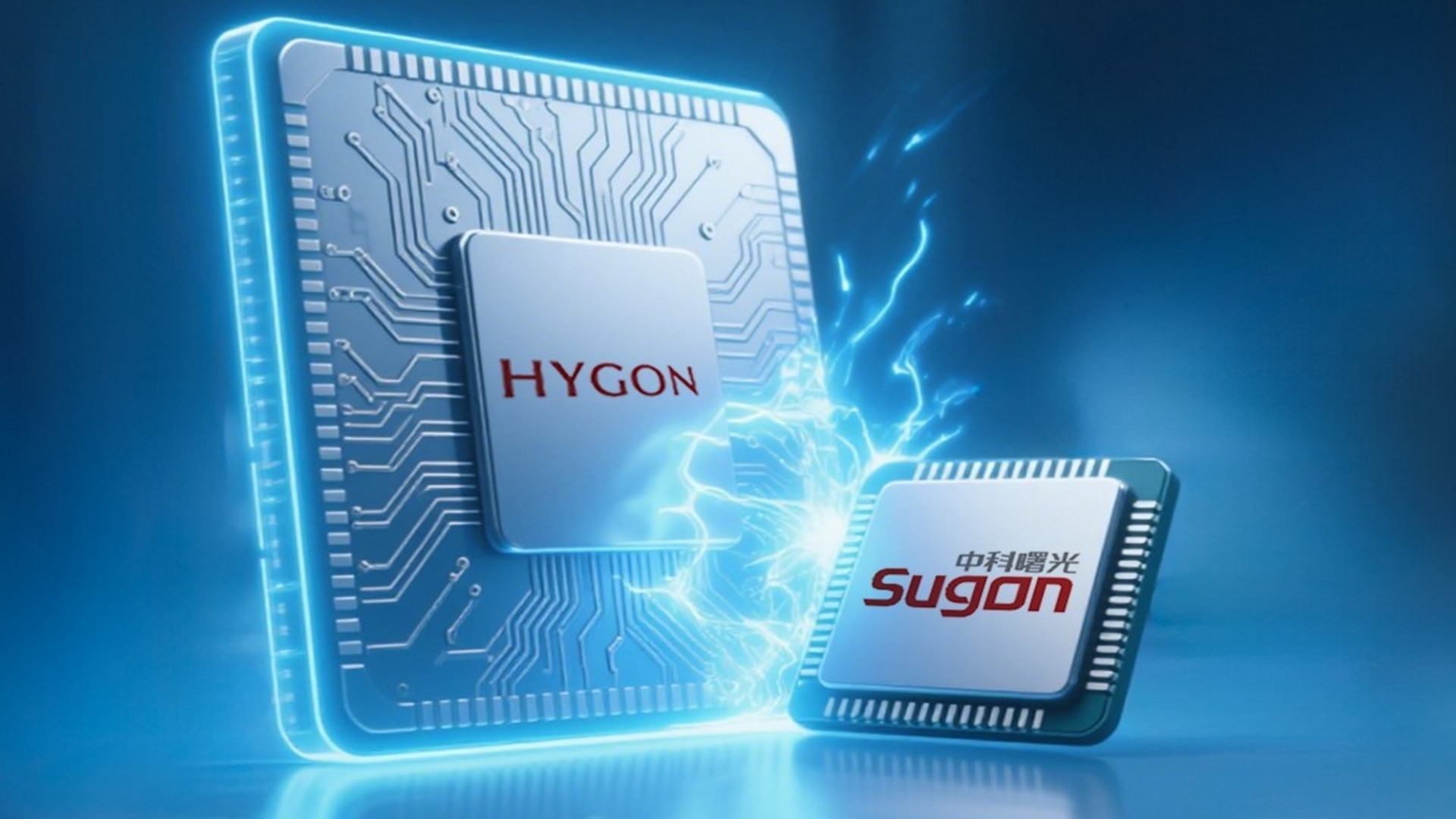Two of China's biggest chip designers just merged to compete better against Intel, AMD and Nvidia
Hygon and Sugon merge to form China’s boldest advanced chipmaking bet yet

- AMD’s Zen 1 tech gave Hygon a head start, but catching up is difficult
- Sugon and Hygon's merger aims at Intel and AMD, but performance proof still remains elusive
- With SMT4 potential, Hygon eyes elite territory in the race for the fastest CPU
A major consolidation is underway in China’s semiconductor industry after two key players, Hygon and Sugon, announced their merger.
The deal represents an effort to strengthen China’s capabilities in high-performance computing, potentially posing a serious challenge to US chipmaking giants Intel, AMD, and Nvidia.
While the merger appears formidable on paper, its global impact remains uncertain due to technical, political, and market constraints.
An integrated force in supercomputing
This implies the use of SMT4 (simultaneous multithreading with four threads per core), a technology only IBM has deployed at scale, beginning with its POWER7 architecture in 2010.
Hygon’s chip development roots trace back to a 2016 licensing deal with AMD, which gave it access to the Zen 1 CPU design and x86-64 architecture.
Although the resulting chips, branded as Dhyana, have remained modest compared to AMD’s EPYC line, they have seen adoption in China, including support from Linux kernel developers and Tencent.
Sugon has also used Dhyana processors in various systems, including a supercomputer that once ranked 38th on the TOP500 list.
Sign up to the TechRadar Pro newsletter to get all the top news, opinion, features and guidance your business needs to succeed!
While these chips are not on par with the world’s fastest processors, they reflect a long-standing collaboration and a continued push for Chinese alternatives.
On the political front, both Hygon and Sugon remain on the US Bureau of Industry and Security’s Entity List.
This designation restricts access to American technologies over national security concerns and raises questions about how much the new entity can innovate independently of U.S. intellectual property.
For now, the power and competitiveness of the new chip remain unclear.
However, the technical leap required to rival AMD’s Threadripper or Intel’s Xeon, often cited among the world’s fastest CPUs, is significant.
Via TheRegister
You might also like
- Upgrading to Windows 11 got easier with Microsoft's new business backup tool
- Check out the best 3D modeling software for 3D printing and more
- We've rounded up the best portable monitors available now

Efosa has been writing about technology for over 7 years, initially driven by curiosity but now fueled by a strong passion for the field. He holds both a Master's and a PhD in sciences, which provided him with a solid foundation in analytical thinking.
You must confirm your public display name before commenting
Please logout and then login again, you will then be prompted to enter your display name.